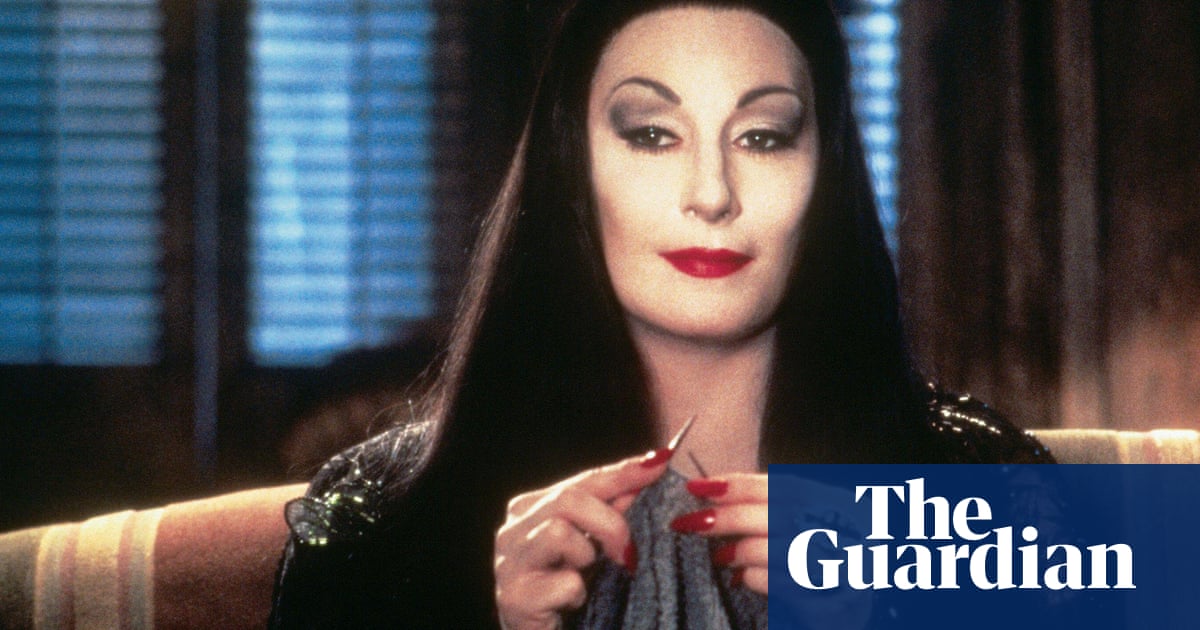Wielding a Belarusian accent like a weapon, Huston joins the Wickiverse as The Director, head of the Ruska Roma syndicate, who is forced to help Wick when every assassin in Manhattan is trying to kill him. She can also be seen bullying a dancer, a taste of things to come since The Director will be back very soon, in Ballerina, the new Wick spin-off starring Ana de Armas (out on 6 June).
In 1949 New York, a Polish refugee finds himself married to three women. Paul Mazursky’s adaptation of Isaac Bashevis Singer’s tragicomedy is like straight-faced Woody Allen, and Huston nabbed her second Academy Award nomination for playing Tamara, a cynical yet sensitive concentration camp survivor. A pity the film doesn’t revolve around her instead of her less compelling husband.
Drew Barrymore makes an adorable proto-feminist heroine in this daft but charming revisionist Cinderella. Meanwhile, Huston’s eyebrows are working overtime, but she still imbues her wicked stepmother with more nuance than we usually see in a panto villain. If only Disney had taken this as the model for their live-action fairytale remakes.
In Woody Allen’s darkest film, Huston plays Dolores, a flight attendant whose lover (Martin Landau) takes drastic action when she threatens to ruin his marriage. Allen himself stars in a lighter parallel thread, but it’s the Dostoevskian half that packs the punch here, helped by Huston’s fearlessly uningratiating performance as a woman at the end of her tether.
Stephen Frears’ film of Jim Thompson’s novel about a trio of small-time scammers in Los Angeles is powered by Huston’s Oscar-nominated performance as a bleached-blond con artist whose feelings towards her adult son (John Cusack) may be more than just maternal. It’s scrappy, lowlife Greek tragedy, capped by Huston’s gut-wrenching howl of despair.
In the first of her five films for Wes Anderson, Huston plays Etheline, wife of a neglectful patriarch (Gene Hackman), and holds her own amid the wacky characters and directorial quirks by playing it low-key, almost naturalistic. No wonder her accountant (Danny Glover) is smitten.
Was there ever such a delightfully romantic couple as Huston and Raul Julia as Morticia and Gomez Addams? Barry Sonnenfeld’s directing debut is little more than a procession of deliciously morbid sight gags and punchlines ripped straight from the original New Yorker cartoons, but who cares when Huston is giving a masterclass in deadpan delivery, and looking fabulous with it? “Don’t torture yourself, Gomez. That’s my job.”
On the set of John Huston’s black comedy, Anjelicaoverheardsomeone saying, “Her father is the director, her boyfriend’s the star, and she has no talent.” She duly silenced any whispers of nepotism by stealing every scene she was in, as Maerose, a scheming mafia princess trying to win back her ex (Jack Nicholson, with whom she had a long-term relationship). She was the third generation of Hustons to bag an Academy Award.
In a perfect world, Huston would have won another Oscar for her formidable German-accented turn as the Grand High Witch in Nicolas Roeg’s film of Roald Dahl’s kiddie horror-comedy. Roeg insisted she wear a “sexy” dress, and before she removes her wig to reveal her true witchy self in all its Jim Henson Creature Shop hideousness, she does indeed look splendid, as well as terrifying.
Huston, who grew up in her father’s house in Galway, fits right in with the Irish ensemble cast of the director’s small but perfectly formed final film, adapted (by her brother Tony) from a story by James Joyce, set during and after a party in snowy Dublin, 1904. She is deeply affecting as a woman whose melancholy reminiscence of a long-lost love triggers a bittersweet epiphany in her husband. “One by one, we are all becoming shades,” he reflects. Sublime.
